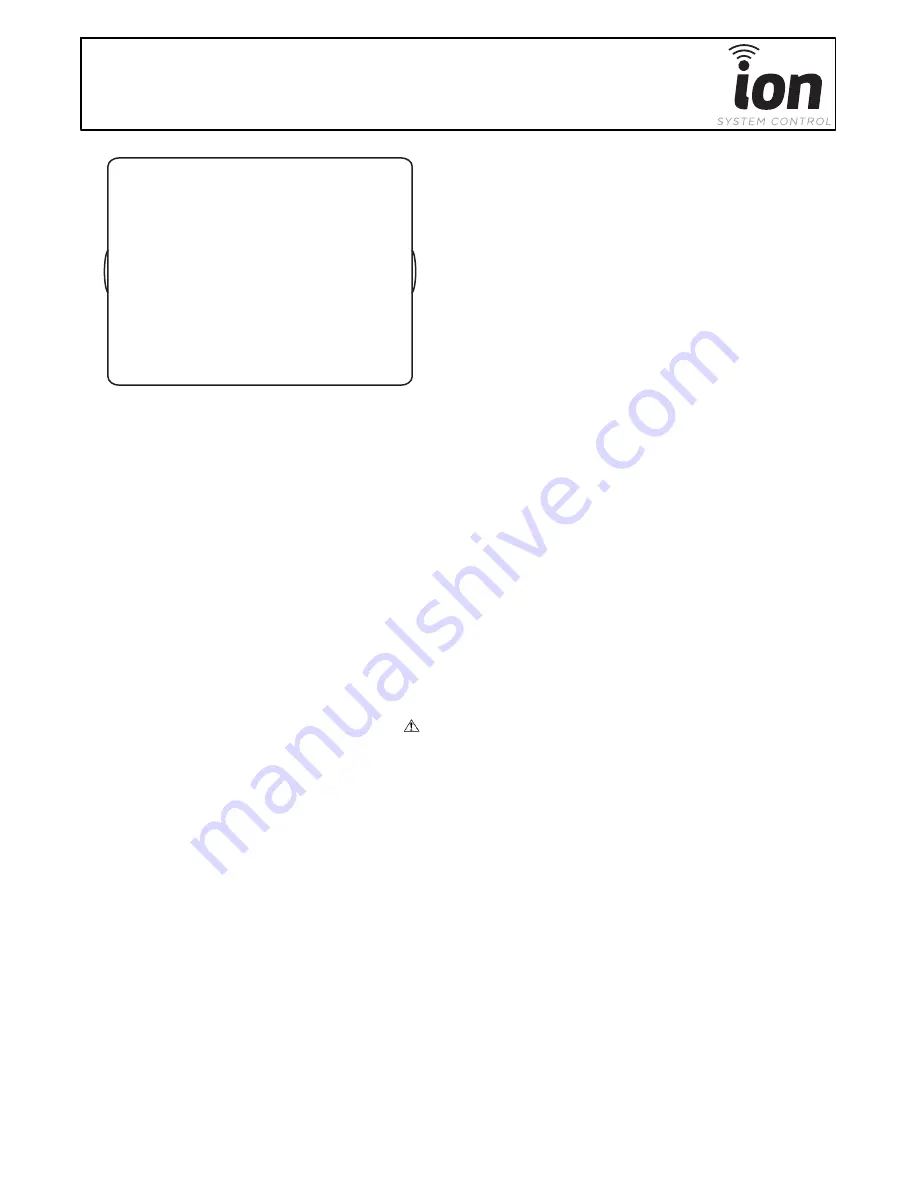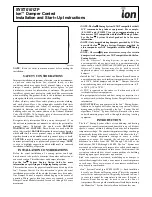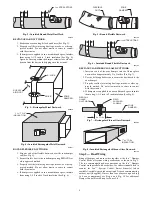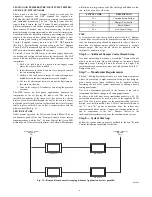
™
SYST0101ZP
Ion™ Damper Control
Installation and Start---Up Instructions
A97040I
NOTE
: Read the entire instruction manual before starting the
installation.
SAFETY CONSIDERATIONS
Improper installation, adjustment, alteration, service, maintenance,
or use can cause explosion, fire, electrical shock, or other
conditions which may cause death, personal injury or property
damage. Consult a qualified installer, service agency or your
distributor or branch for information or assistance. The qualified
installer or agency must use factory--authorized kits or accessories
when modifying this product. Refer to the individual instructions
packaged with the kits or accessories when installing.
Follow all safety codes. Wear safety glasses, protective clothing,
and work gloves. Have a fire extinguisher available. Read these
instructions thoroughly and follow all warnings and cautions
included in literature and attached to the unit. Consult local
building codes and the current edition of the National Electrical
Code (NEC) NFPA 70. In Canada, refer to the current editions of
the Canadian Electrical Code CSA C22.1.
Recognize safety information. When you see this symbol
on
the unit and in instructions or manuals, be alert to the potential for
personal injury. Understand the signal words
DANGER
,
WARNING
, and
CAUTION
. These words are used with the
safety--alert symbol.
DANGER
identifies the most serious hazards,
which
will
result in severe personal injury or death.
WARNING
signifies hazards, which
could
result in personal injury or death.
CAUTION
is used to identify unsafe practices, which
may
result
in minor personal injury or product and property damage.
NOTE
is used to highlight suggestions which
will
result in enhanced
installation, reliability, or operation.
INSTALLATION CONSIDERATIONS
Before the actual installation of a zoning system can begin,
decisions need to be made to determine the number and location of
zones and sensors. This affects duct and damper selections.
See the Ion
t
System Zoning Design Guide for more
information on specifying and designing zoning systems.
This instruction covers the physical installation and start up of the
Ion
t
Damper Control. Use this instruction to guide the actual
installation process after all the air side decisions have been made.
One Damper Control is capable of handling up to four zones of
operation. When greater than four zones are required, a second
Damper Control Module is needed for zones 5 through 8 (8 zones
maximum).
S
NOTE: The Ion
t
Zoning System IS NOT compatible with all
ICP communicating indoor equipment. For example,
(F,G)9MV and (F,G)8MV two--stage, communicating gas
furnaces are NOT compatible with the Ion
t
Zoning System.
See the Ion
t
System Control product data for more
information.
S
NOTE: Only use modulating dampers provided by ICP for
use with the Ion
t
Zoning System. Dampers provided by
other companies are NOT compatible with the Ion
t
Zoning
System.
S
NOTE: Observer
r
System accessories, except for certain
dampers (see damper list), are NOT compatible with the Ion
Zoning System.
Use the Observer
r
Zoning System, or equivalent, for
non--compatible indoor units, such as non--communicating
indoor units, or the (F,G)9MV and (F,G)8MV gas furnaces. The
Observer
r
Zoning System may also be used in retrofit
applications where it is impractical to change existing zone
dampers.
S
Install the Ion
t
System Control and Remote Room Sensors in
non--condensing areas with ambient temperatures between 32
F
and 120
F. Install dampers and the Ion
t
Damper Control in
non--condensing areas with ambient temperatures between --4
F
to 158
F (--20
to 70
C).
S
A TXV is required on the indoor coil when used with all
residential split system equipment.
S
Proper equipment selection and duct sizing are important in a
zoned system. See the Ion Zoning System Design Guide for more
information.
S
DO NOT USE
a bypass damper with the Ion
t
Zoning System.
Addition of a bypass will cause improper operation. Airflow
management will be performed by the Ion
t
System Control
algorithms. The Ion
t
System Control will monitor the system
and will maintain proper airflow through the heating / cooling
equipment.
INTRODUCTION
The Ion
t
Zoning System allows air conditioning and heating
equipment to control temperatures and humidity in up to 8 distinct
spaces, or zones, within a building. Each zone has independent
temperature settings. The comfort temperature settings can change
automatically through the use of schedules. This allows the Ion
t
System to change temperature settings in zones to reflect
occupancy or usage. For example, the end user can condition
bedrooms in a home from 5:00 PM through 7:00 AM or the
kitchen from 3:00 PM through 6:00 PM. The Ion
t
System uses
motorized air volume control dampers (also called zone dampers)
to regulate flow of conditioned air into zones. In this manner, the
system can selectively heat or cool certain portions of a building
depending upon space temperature requirements.
Each zone requires a motorized, modulating zone damper to
control the air supplied to it and a zone sensor to sense temperature
in each zone. There are two types of zone sensors available and
may be used in combination:
S
Ion
t
System Control (p/n SYST0101CW) — Each installation
has only one Master wall/zoning control. This is the command
center for the entire system. It will typically be located in Zone 1
to sense and control the temperature in this zone. If desired, a
Remote Room Sensor may be used to sense the Zone 1
temperature. This can give the installer some flexibility in locating
the Master Ion
t
System Control wall control to another area.


























